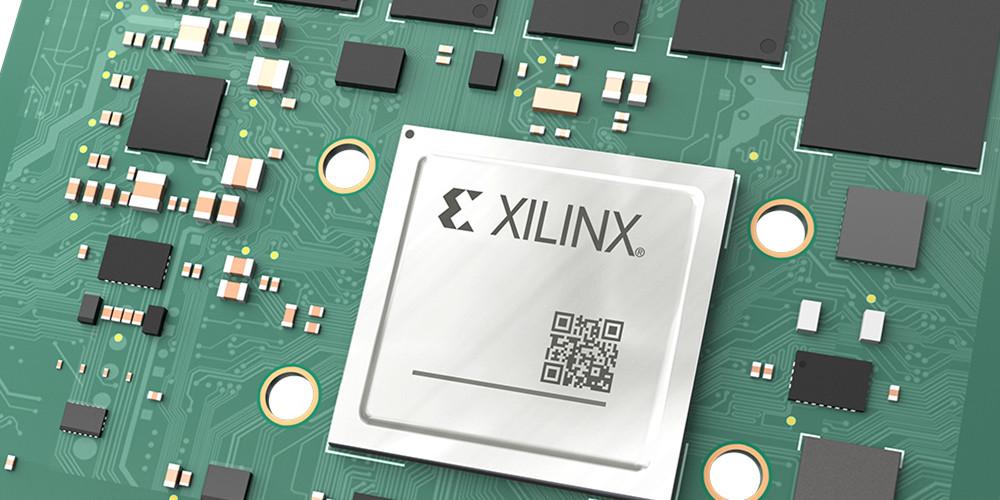News broke that AMD is acquiring Xilinx for a deal of $35 billion. However, the amount would later be increased by 50% as CRN reported the final amount to be $45 billion. It is one of the highest stock-trade deals in recent times and has helped AMD to penetrate newer markets.
In this blog post, you will find out the reason for the deal, what it means for the semiconductor market and what AMD stands to benefit from it.
Why AMD Fought so Hard for the Deal to Fall Through

Some financial transactions involving bigger companies or corporations don’t always fall through for one reason or the others. AMD had so many reasons to literally “fight” for the deal to acquire Xilinx to come through.
According to Protocol, AMD had been fighting so hard to take more shares in the semiconductor market, where Xilinx is holding sway, followed closely by Nvidia and Intel.
In addition to lacking some of the current semiconductor design models, AMD lacks the zeal to push more money into the market to develop these designs, which could run into millions of dollars.
The best strategy was to “take out the competition” and become the “leader.” What could be a better way to do that than by making a bid for the industry-leader, Xilinx?
With the acquisition, AMD now has more hands (engineers) and access to a plethora of semiconductor designs to push further and penetrate more markets.
Changes in Acquisition Price
AMD mentioned its intent to acquire Xilinx in October 2020. The company had made a deal of $35 billion, which could have been the final price if the deal went through then.
However, the final amount was in the region of $45 billion and $50 billion, following the appreciation of the Xilinx stock.
Reasons Why AMD Acquiring Xilinx is a Good Move
AMD and Xilinx are two of the top leaders in the semiconductor market. So, when the former mentioned its dedication to acquire Xilinx, it created a buzz in the semiconductor market.
Already, Nvidia’s moves to acquire Softbak-owned Arm didn’t fall through, especially because of the heavy scrutiny in the CPU and GPU markets, which is Nvidia’s forth. As the deal fell apart, AMD’s acquisition of Xilinx gives it an upper hand in the key data center markets.
As per the official statement from AMD, Xilinx’s acquisition helps the company to play bigger in the data center markets where it had been taking the back seat for a while now.
These markets include AMD’s expansion into the Artificial Intelligence (AI), 5G Network/Communications, defense and aerospace markets. AMD will also be able to expand into the automotive and industrial markets where Xilinx has been holding the forte for some time now.
Generally, Xilinx’s strength and market presence in the key areas, including infrastructure, helps AMD to further diversify its presence in the datacenter markets. The wide range of Field Programmable Gate Arrays (FPGAs) from Xilinx’s portfolio helps AMD to expand its CPU and GPU arsenal to improve on the designs and performance of electronic devices.
A Strengthened Workforce
AMD had been suffering from internal manufacturing, which has forced it to rely on external engineers. With the acquisition of Xilinx, the company can now boast of up to 15,000 engineers.
With such a huge workforce, the company would be better positioned to manufacture tons of datacenter-centric devices for the different markets it now serves.
The completely outsourced strategy will also be inherited from Xilinx, which has been sourcing components and semiconductors from the Taiwan Semiconductor Manufacturing Company Limited (TSMC).
The Market Opportunity
AMD acquiring Xilinx also presents an awesome opportunity, finance-wise. The company projects a combined market size of AMD-Xilinx to be $135 billion by 2023.
An estimated $300 million is to be saved following the outcome of the acquisition.
1. An Even Stronger AMD
As per the information from the official AMD-Xilinx acquisition website, the combination of both companies presents better opportunities for the former, in what it terms “greater AMD.”
These are some of the ways AMD benefits from the Xilinx acquisition.
2. Financial Model Changes
The deal sees to the accretive model of the non-GAAP gross and operating margins. The deal is also expected to be accretive to the non-GAAP EPS, as well as the creation of free cash flow generation in the first year after the acquisition.
Xilinx’s portfolio of high-end products will return high-margins or profits to AMD.
3. Technology Expansion
In addition to leveraging the TSMC component sourcing, AMD also benefits from some of the additional technologies presented by the deal.
First, the company will expand its capabilities in the following technological areas:
- Domain-specific architectures
- Advanced technology development
- Artificial Intelligence (AI) architectures
- Chiplet and interconnect technology
- Leveraging the best-of-breed software platforms.
- Leadership die stacking and packaging technology.
4. Portfolio Diversification
The most important aspect of AMD acquiring Xilinx is the expansion of the portfolio or product. We are looking at the offering of differential datacenter solutions and related products that span across cloud, edge, and intelligent-end devices.
AMD now aims to also offer the industry’s strongest portfolio of high-end performance and adaptive computing products. These products and portfolios will include Adaptative System-on-Chips (SoCs), CPUS, GPUs and Field Programmable Gate Arrays (FPGAs).
Any Hope for Xilinx?
AMD acquiring Xilinx was an all-stock deal, meaning that the outstanding shares of Xilinx are traded to AMD. According to Investopedia, an all-stock trade typically involves the purchase of the outstanding shares from the current shareholders for cash. It also involves offering a higher amount or premium per share over the current stock price, just to help facilitate the deal.
Despite the acquisition, AMD made plans to integrate Xilinx into its operations. This prompted the creation of the Adaptative and Embedded Computing Group (AECG). It is the Xilinx branch of AMD and would be headed by former Xilinx CEO, Victor Peng.
The AECG would among many other things, oversee the driving of excellent leadership in the areas of Adaptative System-on-a-Chip (SoC) and Field Programmable Gate Array (FPGA).
Final Thoughts
AMD is now set to penetrate more datacenter markets and offer a combination of CPU, GPU, FPGA and SoC products to meet the different needs of these individual markets.
The Xilinx acquisition is an opportunity for the company to regain some market shares, invest more in Research and Development (R&D) and provide an overall improved standard for long-term product offerings.

